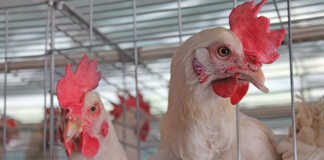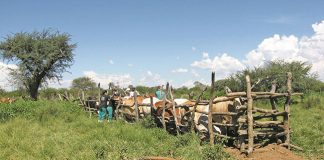To keep its readers informed, Farmer’s Weekly offers a brief look into these trends.
Market analysis part 1 will discuss meat trends; part 2 will discuss grain trends and part 3 will discuss vegetable and fruit trends.
*Please note, all prices are in comparison to the previous week’s closing prices.
BEEF
International
Per head, New Zealand steers and cows traded sideways at NZ$477 and NZ$303 respectively. In the US, beef prices for were higher as follows: top side was 5,31% higher at $229,36/cwt, rump was 5,42% higher at $401,86/cwt, strip loin was 4,70% higher at $632,64/cwt, chuck traded 4,34% higher at $206,64/cwt, and brisket traded 6,20% higher at $207,24/cwt.
Domestic
As reported by RMAA, beef prices were mixed. Class A prices were 0,38% lower at R39,20/kg and Class C prices were 0,70% higher at R28,90/kg. The average weaner price was 0,15% lower at R20,10/kg. The average hide price, as determined by the average between the RMMA and independent companies, was slightly lower over the past week at R13,96/kg green.
Outlook
Internationally, prices are supported by the lower offers of meat from both New Zealand and Australia, and increasing end-user demand as the US market heads into its peak grilling season. Locally, prices may follow a seasonal sideways to downward movement in the short-term, with a long-term upward trend as the effects of the drought become apparent.
MUTTON
International
New Zealand’s lamb prices traded sideways and closed this week at NZ$69,0/head for a 15kg lamb, while mutton prices increased, with ewe prices closing 0,22% higher at NZ$46,40/head for a 21kg ewe. The import parity price for lamb was 1,29% lower at R52,88/kg, and the import parity price for mutton was 1,07% lower at R30,30/kg.
Domestic
As reported by the RMAA, mutton prices were mixed. Class A was 1,49% higher at R57,80/kg and Class C was 1,01% higher at R38,90/kg. The average price for feeder lambs was 0,25% higher at R27,77/kg, while the average price for dorper skin was 4,07% lower at R61,92/skin. The average price for merinos was 7,53% lower at R91,70/skin.
Outlook
Internationally, global lamb markets appear to now be well aware of the shorter lamb supplies expected out of New Zealand this season. This, together with tight supplies from Australia, will drive positivity in the market. Locally, mutton prices are expected to remain supported into May, in line with seasonality, and as the effects of the drought become apparent.
PORK
International
Over the past week, US pork prices were mixed. Carcass prices were 0,78% higher at US$77,29/cwt, loin prices were 0,03% lower at US$76,59/cwt, rib prices were 0,65% lower at US$145,67/cwt, and ham was 3,65% higher at US$56,49/cwt.
Domestic
Domestic prices were lower over the past week, in line with seasonal trends and the week-on-week increase in slaughtering. Porker prices were 0,21% lower at R23,90/kg, while baconer prices were 0,30% lower at R23,02/kg.
Outlook
Internationally, large production numbers continue to weigh longer term on the pork market, but improved demand may counterbalance the impact of large supplies. The USDA lowered its pork production forecast, which may provide some temporary support. Locally, prices remain soft due to seasonality, but improved demand for cheaper proteins, like pork in lieu of beef or mutton, may support prices.
POULTRY
International
The past week’s US poultry prices traded mostly higher, with whole bird prices 1,20% higher at 88,40USc/lb, and breast prices 1,82% higher at 112,00USc/lb. Leg quarters, however, traded 5,71% lower at 33,00USc/lb.
Domestic
The average poultry prices remained mostly sideways, but there was a notable decrease in the IQF price. The average price for frozen birds was 0,07% higher at R23,04/kg, and whole fresh medium bird prices traded 0,06% higher at R23,77/kg. IQF prices, on the other hand, were 0,28% lower at R18,97/kg.
Outlook
Internationally, the US poultry market remains well supplied and stands to benefit from low feed costs. Locally, poultry prices have remained weak due to good supplies in the market, but, as poultry remains the cheapest protein, demand may improve, which will further support prices.
SOURCE: ABSA Agri-Trends for April











